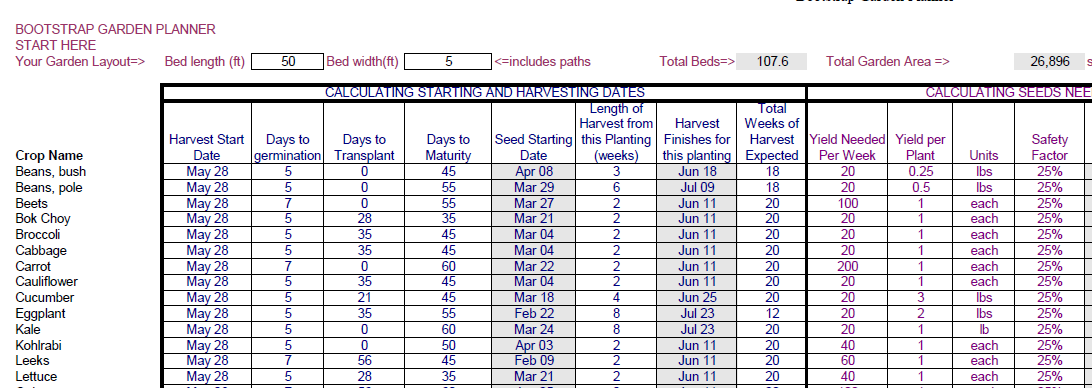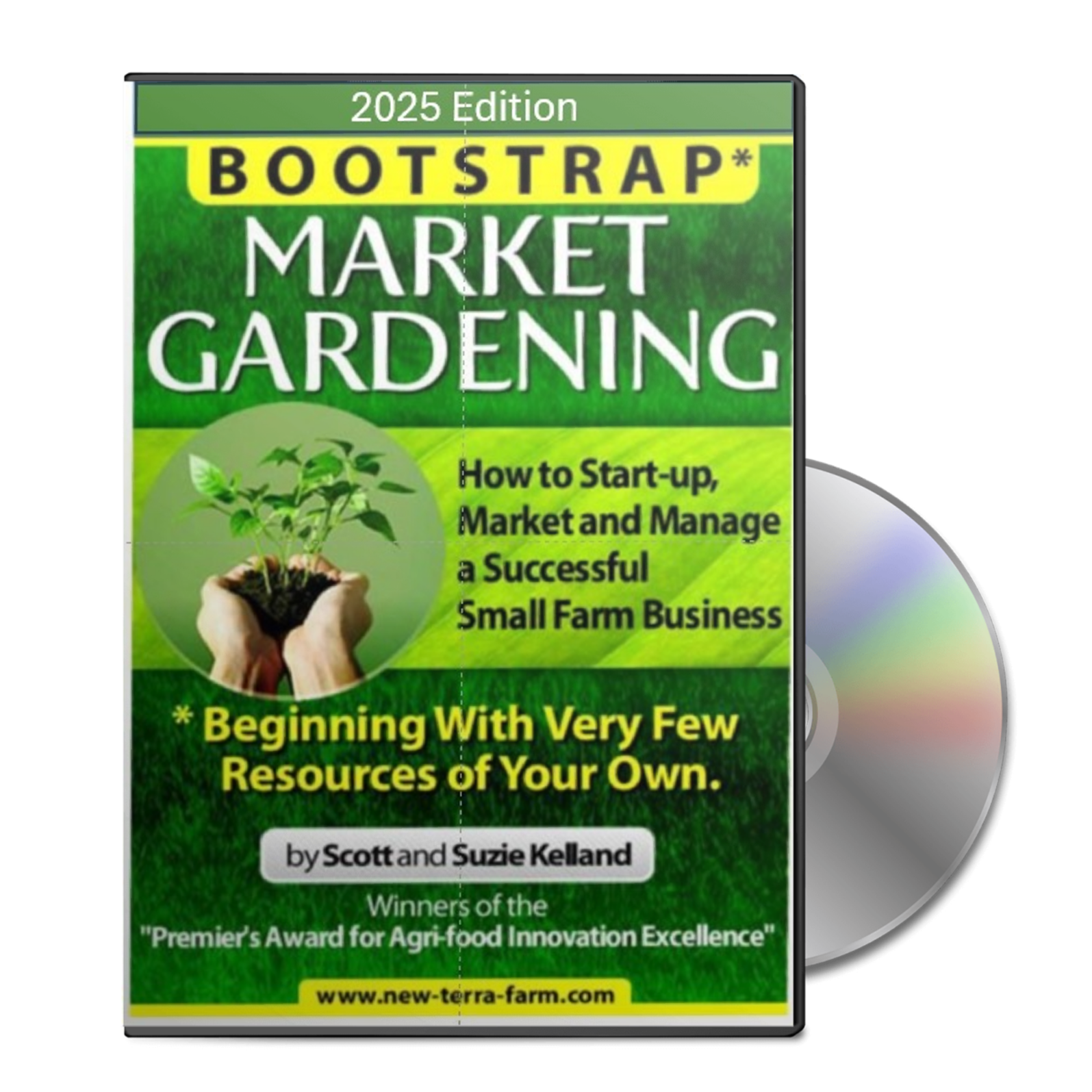The Truth About Vegetable Farming for Profit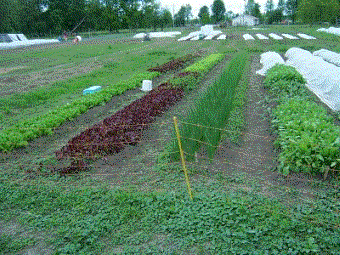 Just north of my farmhouse. NOT your typical home garden Just north of my farmhouse. NOT your typical home gardenHere's the truth about vegetable farming for profit: there's a world of difference between the typical home garden and a successful market garden. Organic vegetable farming is a more complex and demanding, and requires much more in the way of planning and management than casual home gardening.
But the Serious Home Gardener Should Read This, Too
If you want to have a serious home garden that provides a significant percentage of your food, the following applies to you as well.
1. The diversity of crops grownCrop diversity is essential for successful (organic) vegetable farming. You need to grow a complex “polyculture” of crops, for a couple of reasons: first, this helps create a mini-ecology on your small farm, supporting soil microorganisms and beneficial insects that contribute to garden health.
On the other hand, if you are growing a complex polyculture of perhaps 30 or 40 crops (like we do at New Terra Farm) and 3 or 4 fail completely, you are still at 90% productivity. This is important if you are depending on the garden for income (or food!)
2. Integrated management of crop production and animal husbandry.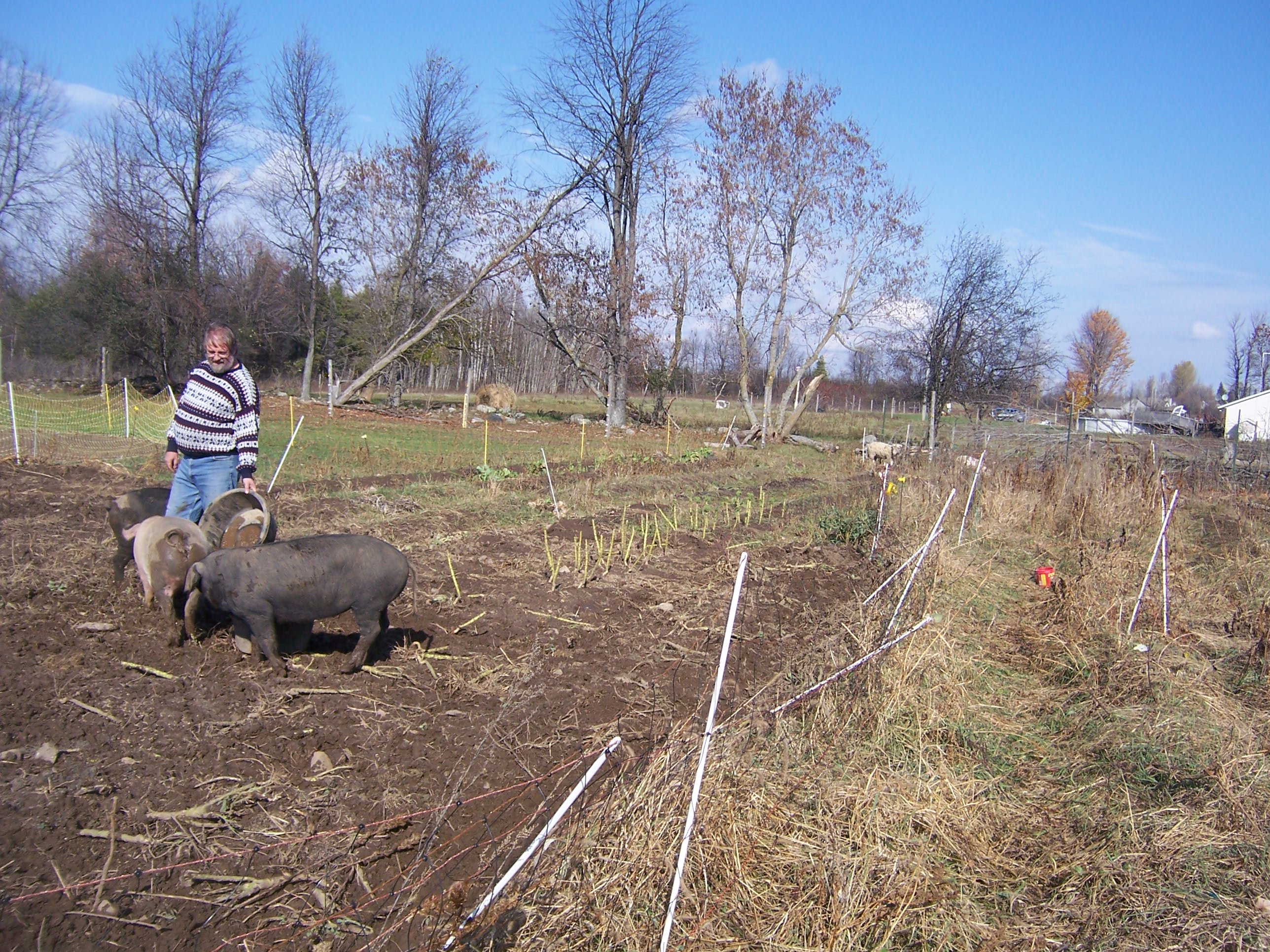 Our pigs help clean up the garden and maintain soil fertility Our pigs help clean up the garden and maintain soil fertilityI tell people (only somewhat facetiously) that organic vegetable farming consists mainly of moving manure from where it is to where you want it to be. Vegetable farming for profit depends on maintaining soil fertility by the application of composted manure, crop rotation, and cover cropping.
Free Market Garden Start-up Guide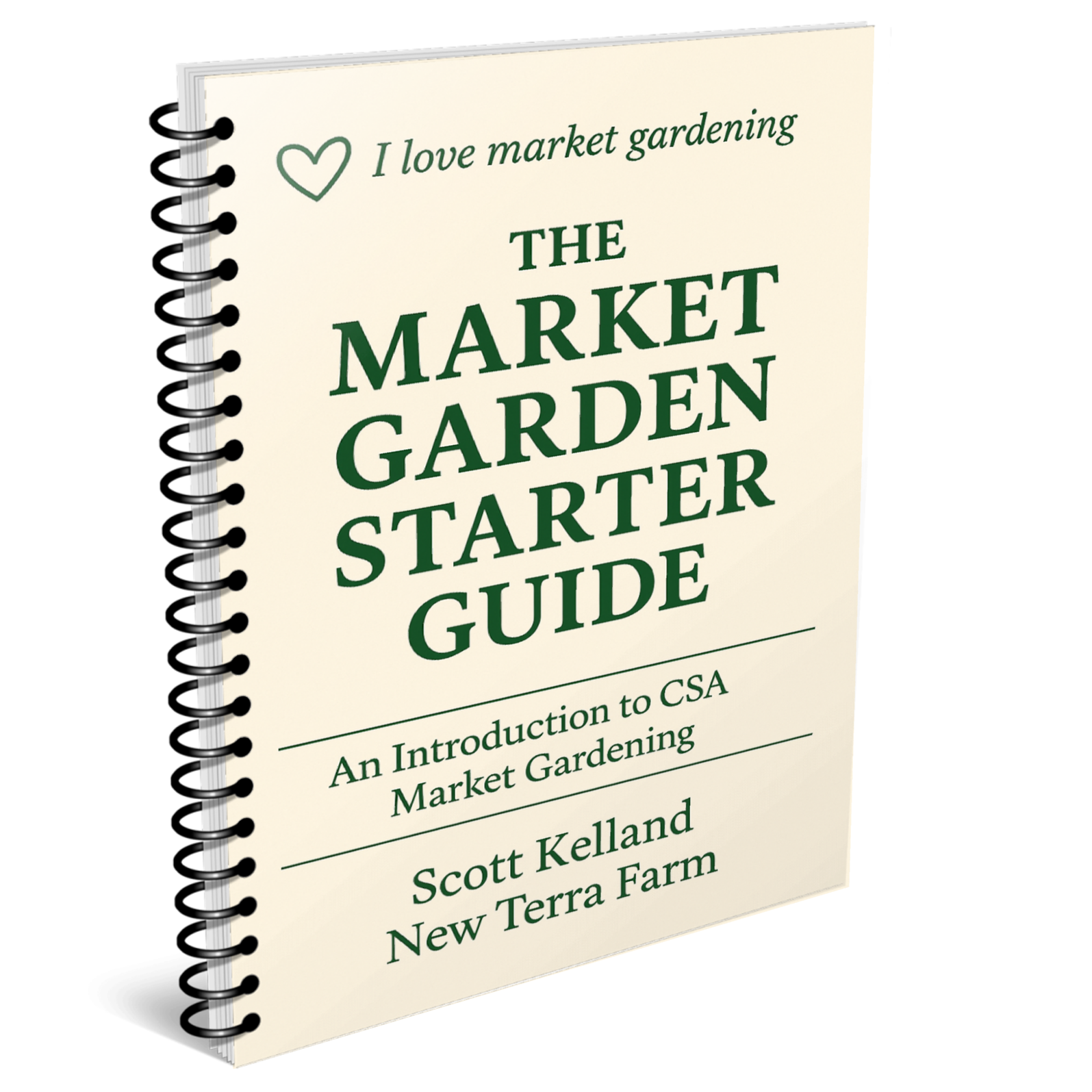 The consumer demand for fresh local organic food has never been higher. Bad news on the supply chain is good news for local growers. Get my free Organic Market Gardener Start-up Guide and see if this is the right time to launch your CSA market garden business. Enter your best email and the guide will be sent to you right away. 3. Integrated management of garden pestsThis includes animals, insects, weeds and diseases. In the home garden, losing crops to the 'bad guys' is annoying; if you are vegetable farming for profit, your income can be wiped out!
We use about a half-mile of floating row cover row cover each year, as a physical barrier against insects. We grow multiple varieties of each vegetable (see Diversity above) and we do multiple plantings. We leave large 'wild strips' in the garden to provide a habitat for beneficial predatory insects. We rotate crops to reduce the build-up of pests.
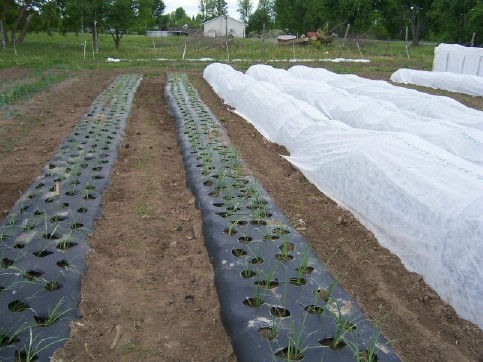 Row cover and film mulch reduce insect pests and soil micro-organisms Row cover and film mulch reduce insect pests and soil micro-organisms4. Accounting for labourThe home gardener probably doesn't care how many hours her garden consumes, or the 'payback' achieved. However, if you are vegetable farming for profit, labour will be your biggest expense. So you have to think about getting the most return you can for the effort expended. This is true whether you do the work yourself or hire help. Some crops you just will not be able to grow profitably; you will need to keep good records to determine which.
This can be challenging, because many techniques are scale-dependent - e.g. double-digging garden beds is feasible in the home garden, not so much on a 40,000 square-foot market garden. This means that sometimes, growing the size of your garden requires completely changing how you do things, and getting new equipment to do it.
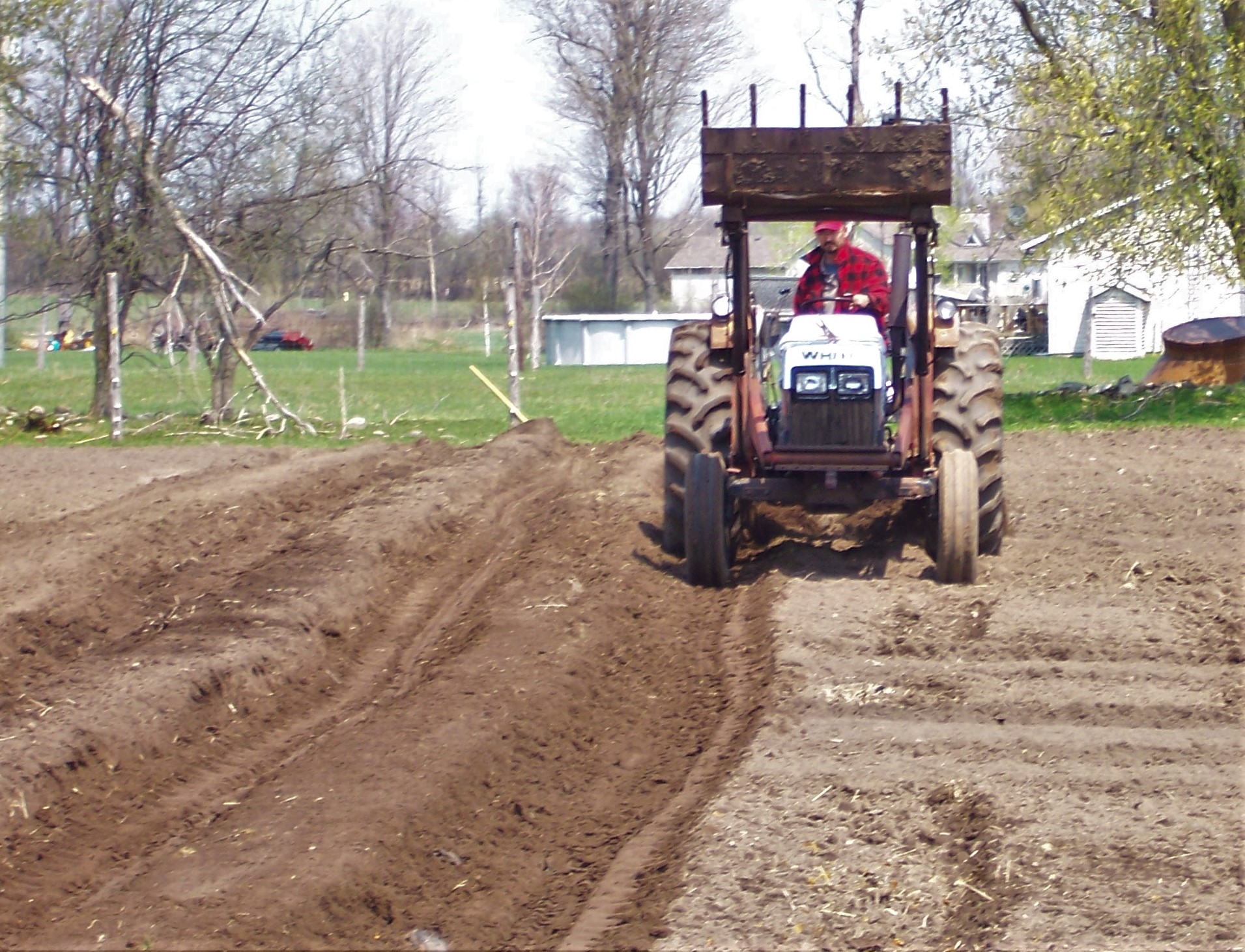 Bed shaping equipment can save a LOT of hand labour Bed shaping equipment can save a LOT of hand labourA good example of this in the picture above. We hired a neighbor (thanks Dan) with a tractor-mounted tiller and bed-shaping equipment. He built our whole garden (about an acre) in one day. Aside from all the labour saved, this also meant I could plan out our garden crop placement more easily. And, big bonus, no bottleneck in planting because we fell behind in bed making. Last tip, whether a home gardener or a market gardener, order your seed early. Supplies of popular cultivars occasionally run out. Here's some seed houses I recommend that have a great selection, good prices and lots of 'grow-how' information on their websites. The Most Profitable Garden ModelCSA Market Gardens typically have the highest net income. Bootstrap Market Gardening shows you step-by-step how to start-up, market and manage an organic market garden based on CSA principles. New edition includes my Garden Planner spreadsheet and Get Bootstrap Market Gardening only from New Terra Farm. More like Vegetable Farming for Profit
Learning how to start seeds efficiently is important for the new small farmer or market gardener. Here's a primer Growing sweet potatoes can be an important part of your food plan. And despite the fact that Ipomoea batatas is very susceptible to cold, you can grow them even in my chilly 45N latitude. Let’s talk about the why, what, how, and how much of growing sweet potatoes in a cold climate. How to plan a garden for efficient use of space, and your time. Since its getting to be that time of year for seed starting (at least in the northern hemisphere) I thought I would provide a quick example of how I plan my plantings here on the farm. Vegetable farming for profit requires resources – equipment, machinery, tools and sometimes 'hired help'. You are going to need some start-up capital; that's one reason we created our Bootstrap Market Gardening model I’ve read a few articles about growing high income crops, but they seem to leave out a few things. Here's my take If you have not yet begin farming, or even if you have and want to have better success, you need to focus on farming for results Growing seed potatoes can be an important contribution to your long-term survival food supply. Here's how we grow' em and store 'em at New Terra Farm More Resources for the Small GrowerChapter 9 - Seven Cash Cow Crops: The Self-Sufficient Backyard Raise chickens, pigs and a productive organic garden: The Homesteader Book Bundle Fresh egg for breakfast (and maybe barter): The Eggs Factory If you need to build it for your homestead, the plans are here: 16,000 Woodworking Plans
|
See Something You Like? Share!
Got questions to ask, stories to tell?
Share your organic market gardening question, or comment, or story.
Recent Articles
-
Farm training for the new or wannabe farmer
Jan 02, 26 10:38 AM
Practical farm training from award-winning New Terra Farm -
Farm grown reviews of products recommended by New Terra Farm
Dec 04, 25 06:26 AM
Find great farm and garden products in my farm grown reviews -
Best Chicken Coop and Accessories for Small Farms and Homesteads
Nov 30, 25 09:18 AM
Looking for the best chicken coop? Here are the top coops, accessories, nest boxes, and gear to build a safe, productive poultry setup.
